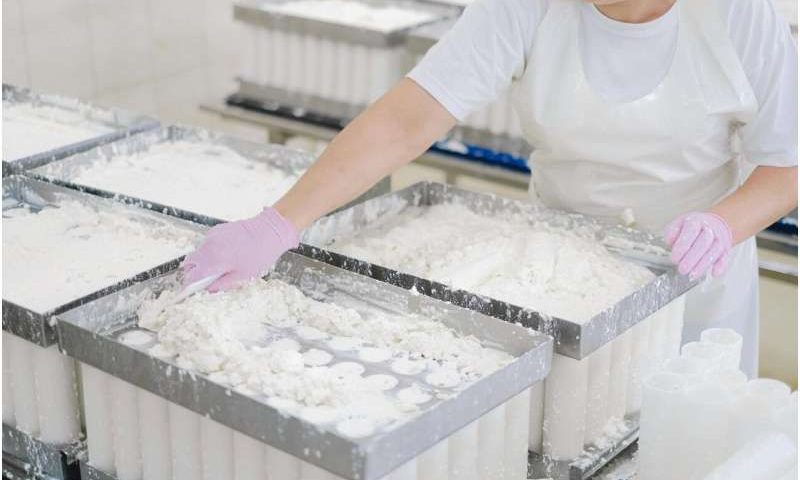PA-915 molecule shows long-lasting antidepressant effects without common side effects in mice
Depression and anxiety disorders are among the most widespread mental health disorders, with estimates suggesting that they affect around 264 million and 284 million people worldwide, respectively. Depression is a mood disorder characterized by persistent sadness and a loss of interest in everyday activities, while anxiety disorders are marked by high levels of nervousness, worry and fear, either in specific situations or generalized.
Today, there are several treatment options for both depression and anxiety disorders, including both pharmacological drugs and specific types of psychotherapy. Yet available therapeutic strategies are not effective for all affected individuals; thus, identifying alternative treatments could be highly advantageous.
Researchers at the University of Osaka, Kobe University School of Medicine, Hamamatsu University School of Medicine and other institutes have recently developed a new molecule called PA-915, which could hold some promise for the treatment of depression, anxiety and stress-related disorders. In a paper published in Molecular Psychiatry, they showed that the molecule suppressed both anxiety-like and depression-like behaviors in mice who were placed under high levels of stress.
“Stress-related disorders, such as depression and anxiety, have been one of the most important medical issues,” wrote Yusuke Shintani, Atsuko Hayata-Takano and their colleagues in their paper. “Accumulating evidence suggests that the activation of the pituitary adenylate cyclase-activating polypeptide and its receptor PAC1 are involved in the stress axis and the development of stress-related disorders. We recently developed PA-915, a small-molecule, non-peptide, high-affinity PAC1 antagonist, and demonstrated that it significantly suppresses anxiety-like behavior in acute stress-induced mice.”
The primary objective of the recent study by Shintani, Hayata-Takano and their colleagues was to better understand how the intake of PA-915, a molecule that they developed as part of their earlier research, affected the behavior of mice with tendencies that mirrored those observed in human patients diagnosed with depression. PA-915 is a drug that blocks PAC1 receptors, which are known to play a role in stress responses and anxiety.
The researchers significantly raised the stress levels of mice employing a combination of strategies. These included repeatedly exposing the mice to an aggressive and dominant mouse, administering corticosterone (the main stress hormone in rodents) and isolating them from other mice.
“PA-915 ameliorated the increased immobility time in the forced swim test in these stress-induced mice,” wrote Shintani, Hayata-Takano and their colleagues. “In repeated social defeat stress mice, PA-915 improved anxiety-like and depression-like behaviors and cognitive dysfunction, as assessed by the light-dark, open field, elevated plus maze, sucrose preference, forced swim, Y-maze, and novel object recognition tests. In addition, we evaluated the usefulness of PA-915 as an antidepressant and compared it with ketamine and fluoxetine.”
Interestingly, the researchers found that the PA-915 molecule reduced depression-like and anxiety-like behaviors in the chronically stressed mice. The mice were found to swim more vigorously in the forced swim test, while also performing better in maze navigation and object recognition tasks.
The molecule’s antidepressant effects were also found to be long-lasting, resembling the effects previously reported with ketamine. Moreover, intake of the molecule did not appear to cause common side effects of some antidepressant or anxiolytic medications, such as hyperactivity, dependency or cognitive deficits.
“In the sucrose preference test, an antidepressant-like effect was observed for 8 weeks in mice that received a single dose of PA-915, which was a similar effect observed with ketamine,” wrote the authors.
In non-stressed control mice, PA-915 did not induce behavioral abnormalities, such as hyperlocomotion, cognitive dysfunction, or dependency. The present results show that PA-915 improves anxiety-like behaviors and cognitive impairment and exerts rapid and long-lasting antidepressant effects in chronic stress-induced mouse models of anxiety and depression, proposing a promising treatment option for stress-related disorders.”
Overall, the results of this recent study suggest that blocking PAC1 receptors is a promising pathway for treating depression and anxiety disorders. In the future, the molecule designed by the researchers could be improved further and tested on other animal models of stress-related disorders. If it proves safe and effective, it could then be assessed in human clinical trials, which could lead to its commercialization and use in health care settings.




















